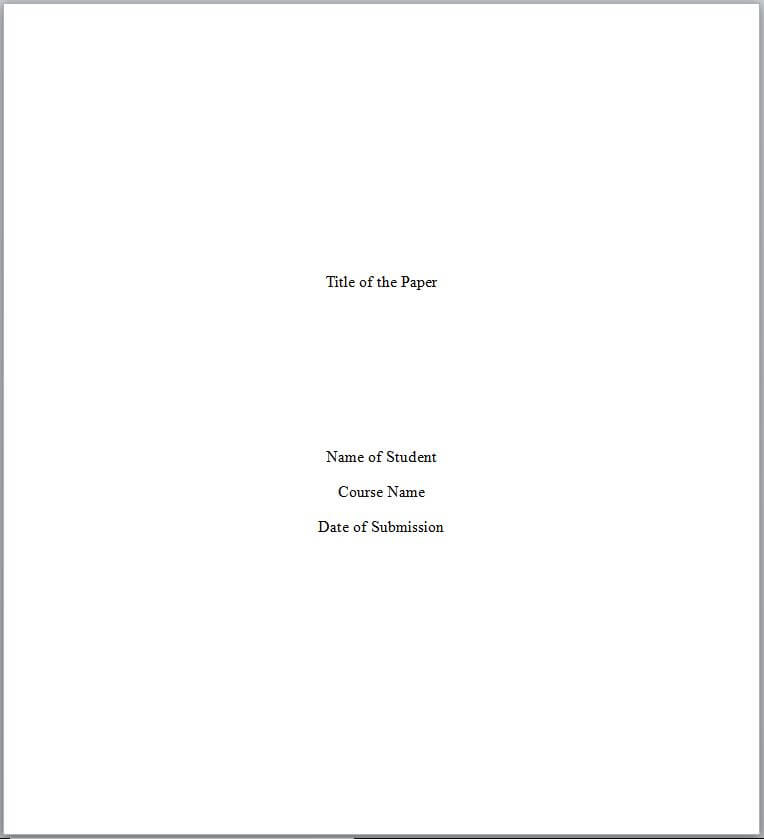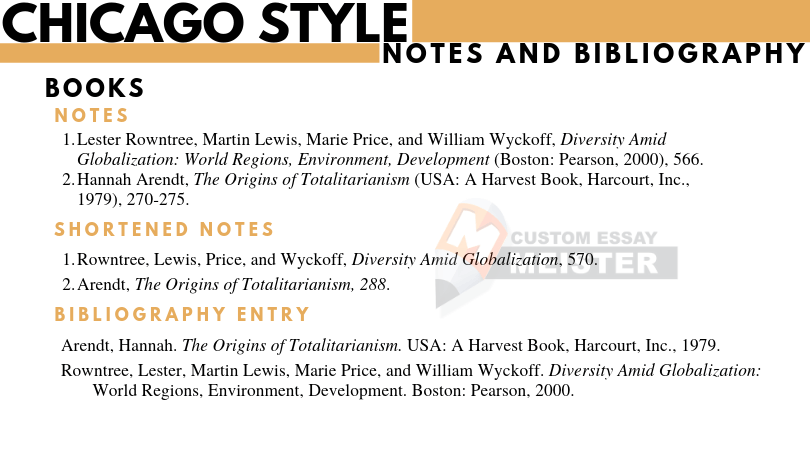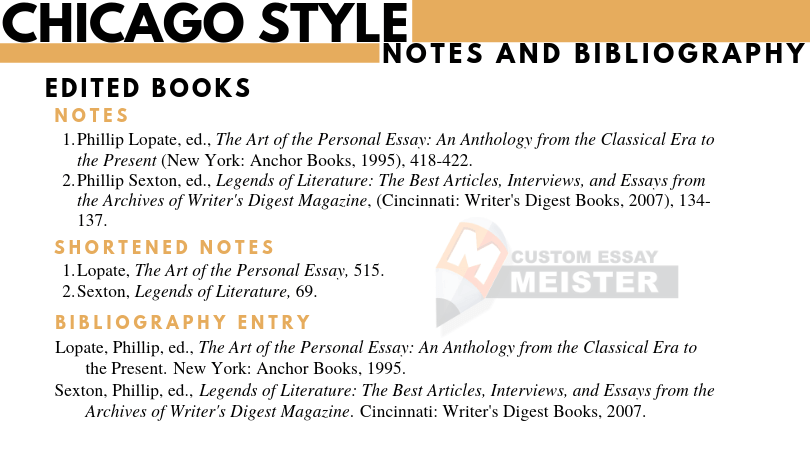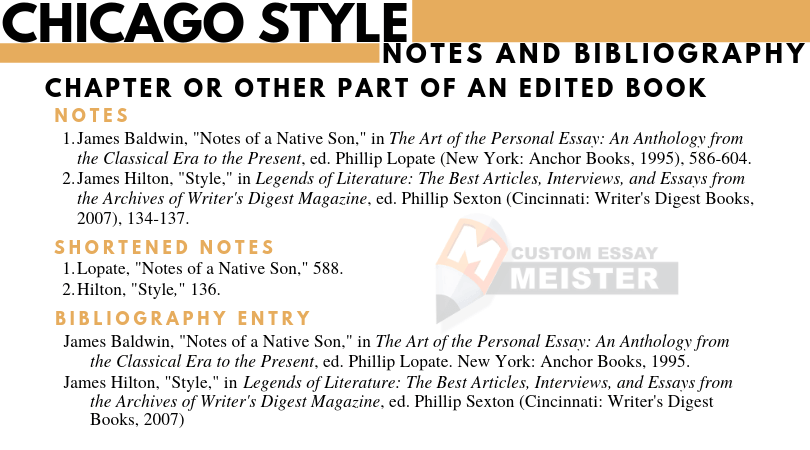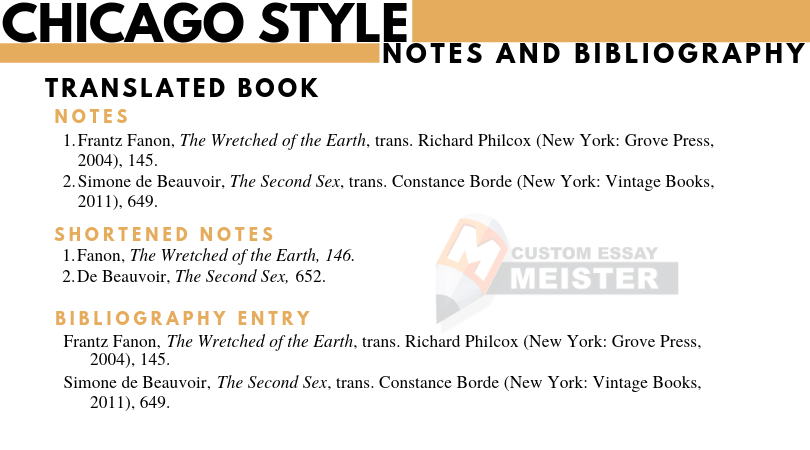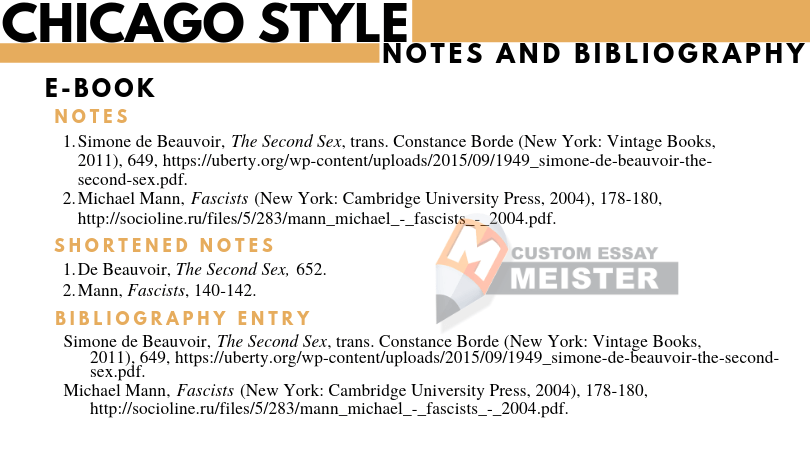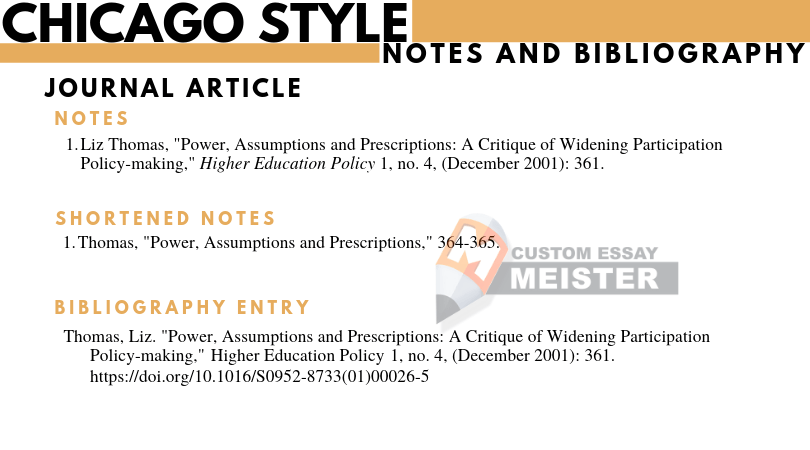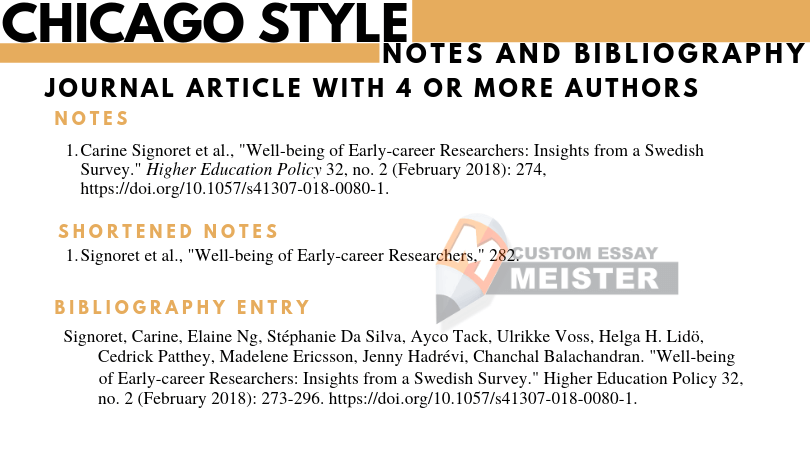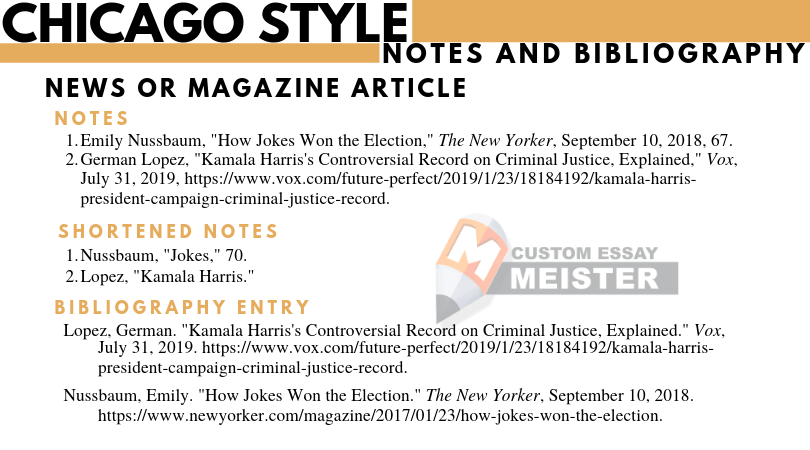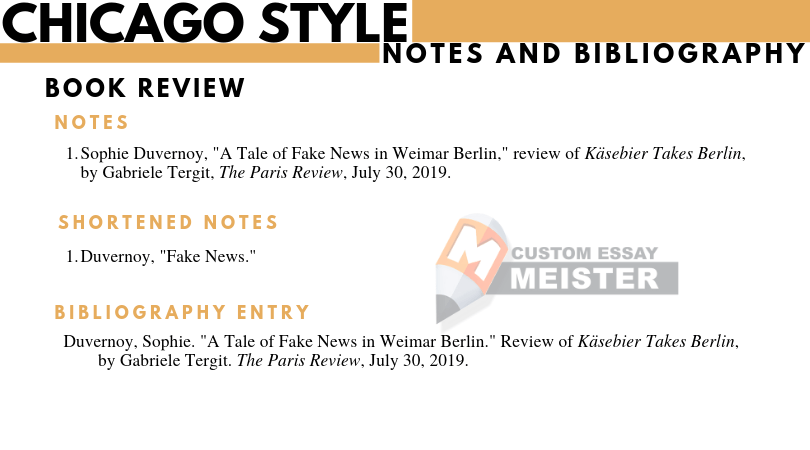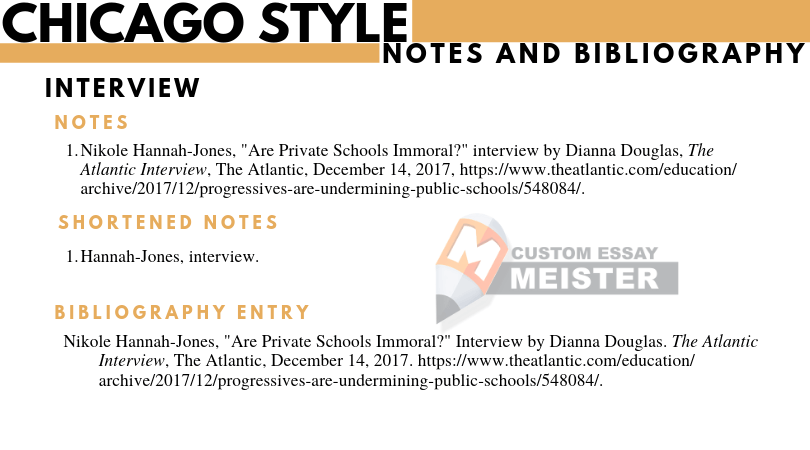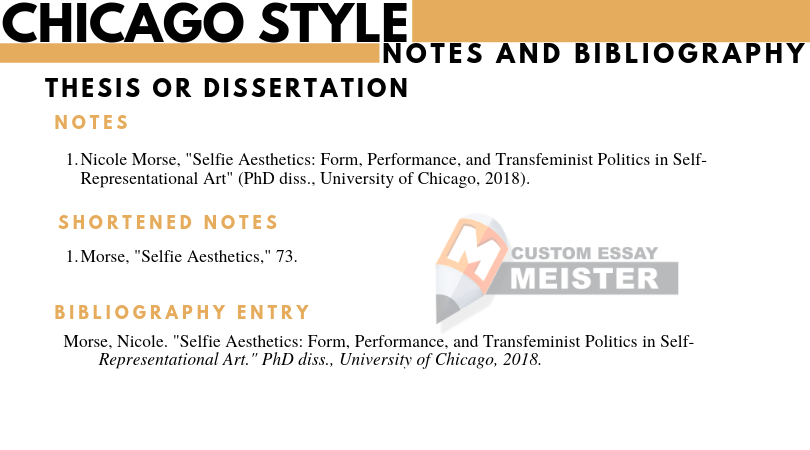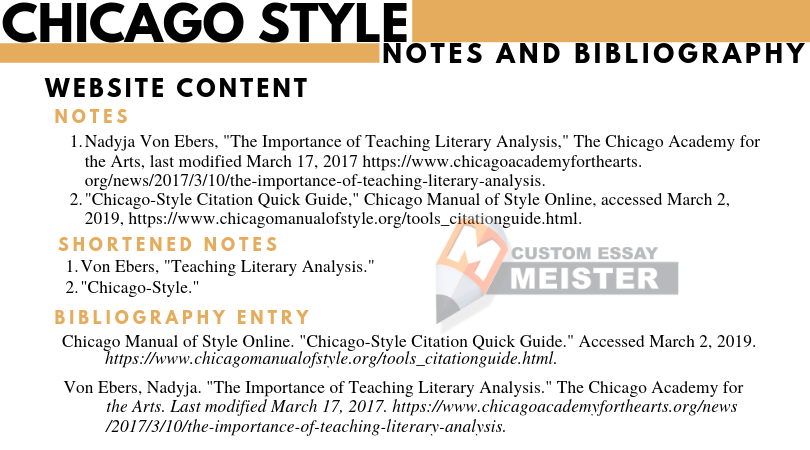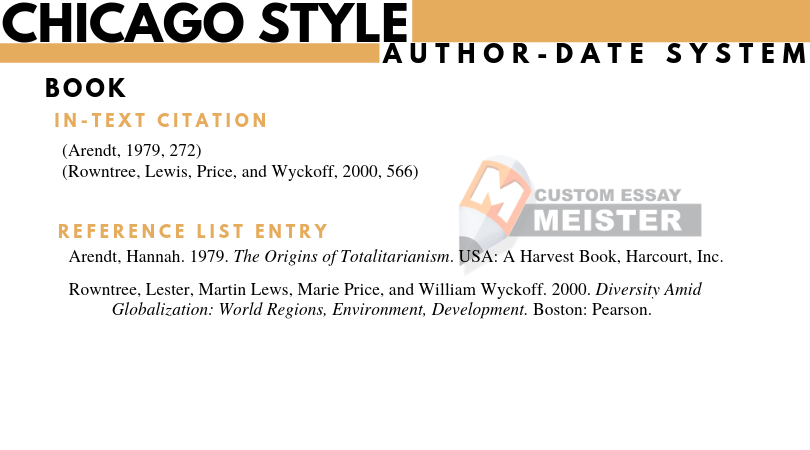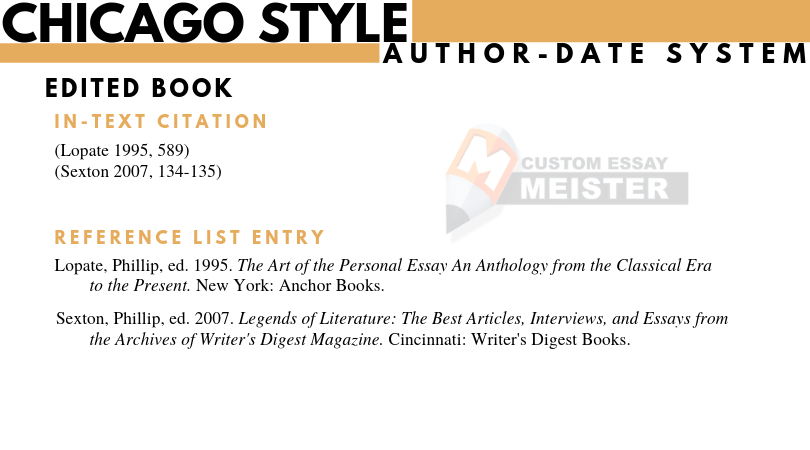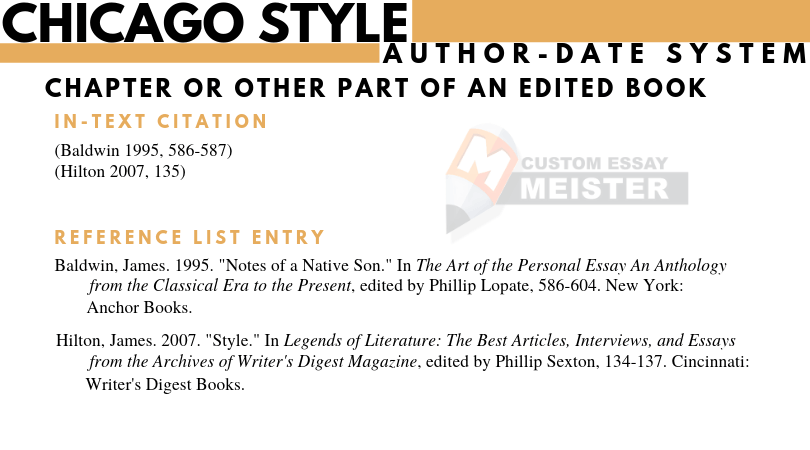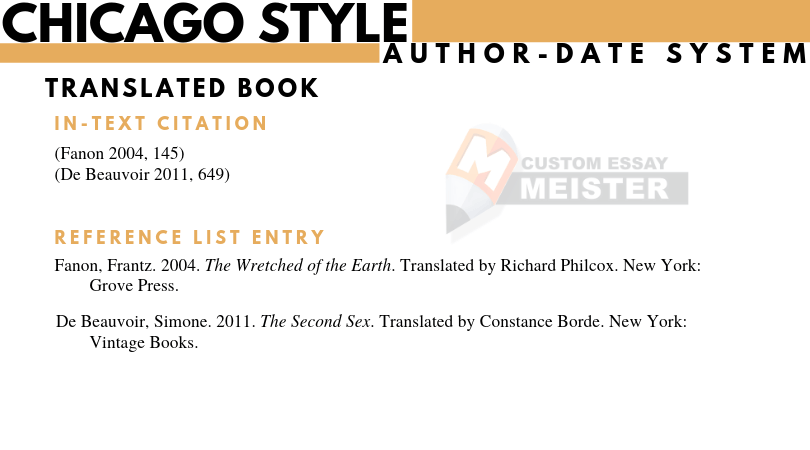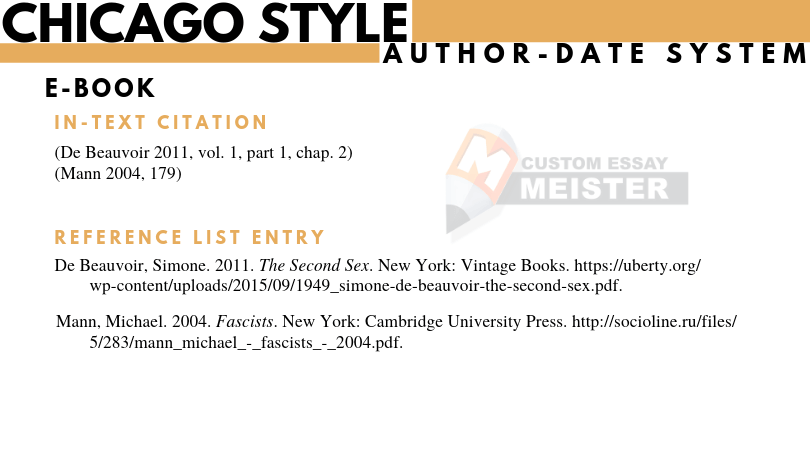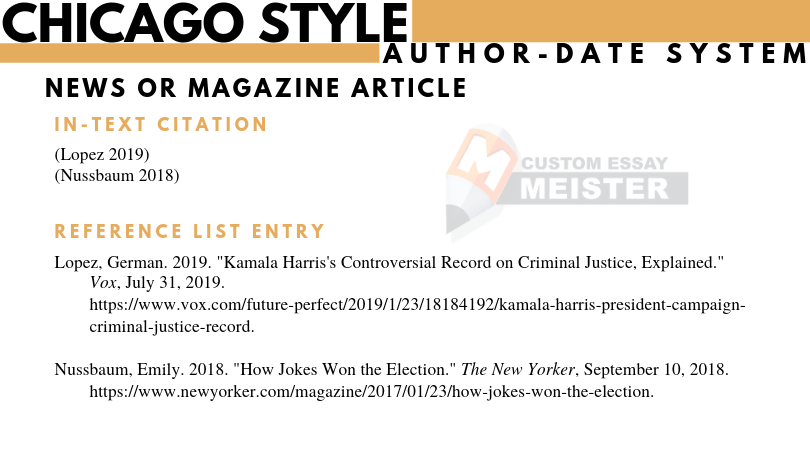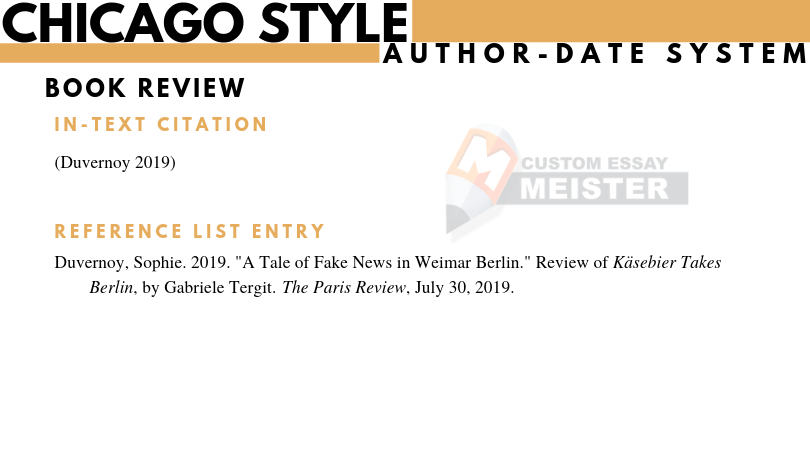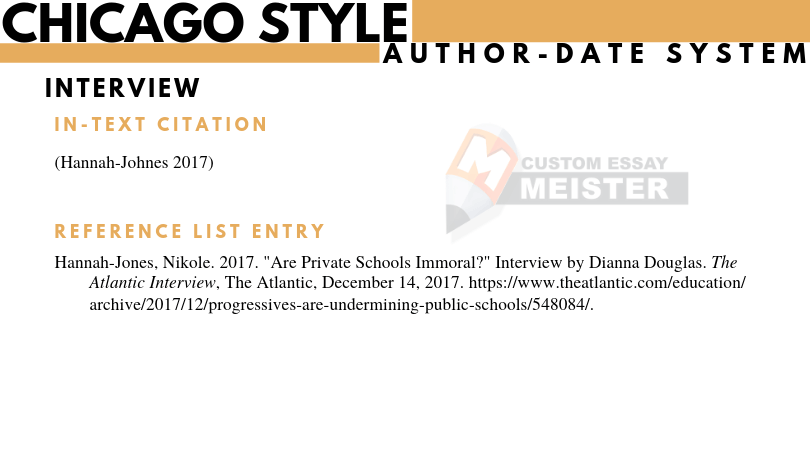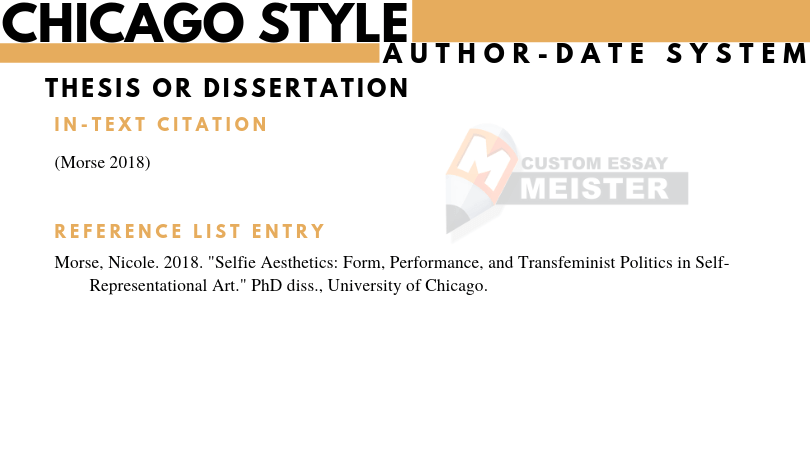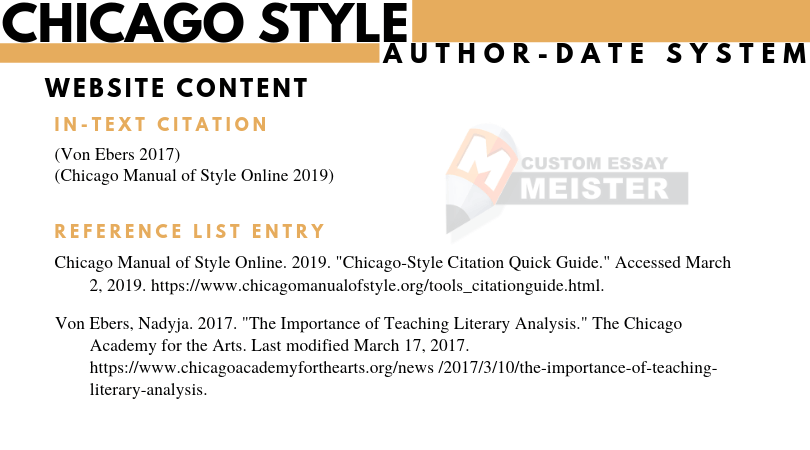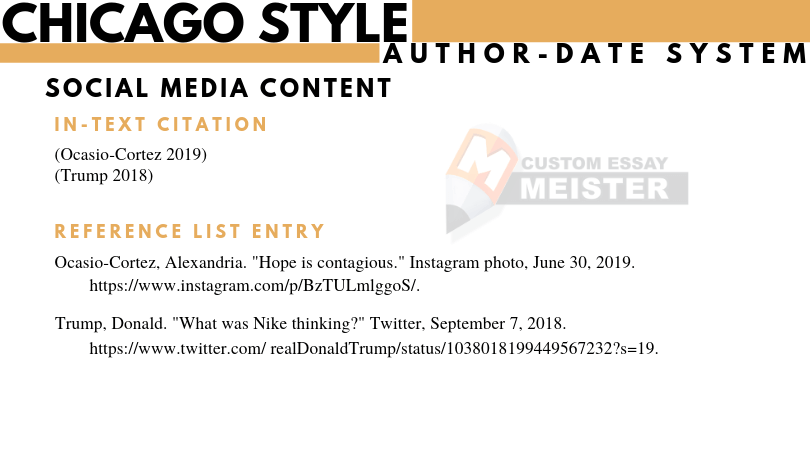Chicago Citation Style
Most works written in the fields of humanities and social sciences follow Chicago style when citing sources. The Chicago citation style offers two varieties for citing sources: (1) n otes and bibliography and (2) author-date . Researchers and writers select the system depending on their work’s subject matter (if it was not specified by a professor or a publication). Here’s how to differentiate between the two systems:
Notes and Bibliography
- This system uses footnotes or endnotes, and superscripts for the in-text citation. The footnotes or endnotes provide more detailed information about the source.
- Preferred by writers and researchers in humanities, such as in literature, history, and the arts.
Author-date system
- This system uses a Reference list at the end of the text, and parenthetical in-text citation. The Reference list contains the complete bibliographical information of the source while the in-text citation gives a preview.
- This is preferred by researchers in the sciences and social sciences. These include history, anthropology, sociology, and occasionally, business.
Some researchers prefer the Notes and Bibliography system simply because the superscripts do not disrupt the flow of the paper, unlike the parenthetical in-text citation of the Author-date system. Generally speaking, however, there are no other differences between these two systems.
Here is how to format the Chicago style cover page:
Here are the basic guidelines in citing sources when making a Chicago-style Bibliography or Reference list page:
- The page has one-inch margins on all sides.
- Bibliography denotes the sources’ page in a Chicago-style document. "Bibliography" should be typed at the center of the first line.
- Every citation entry begins on the left, aligned with the margin. The additional lines are half an inch from the left margin.
- Each entry should be in single-space and observe double-space between entries. This will depend on the instruction of your professor.
A Chicago research paper follows this format:
- 1-inch margin on all sides.
- The first line of each paragraph should be indented by 0.5 inches.
- Font style should be readable, preferably 12 pt. Times New Roman or Courier.
- The text should be double-spaced, unless otherwise specified.
- The right margin should be “ragged,” not justified.
Notes and Bibliography
The Notes for this system has a longer and a shorter format. The longer note is used on the first time a source is cited in the text. So, for all subsequent citations of the same source, the shortened notes should be used.
Book
Edited books
Chapter or part of an edited book
Translated book
E-book
Journal article
Journal article with four or more authors
News or magazine article
Book review
Interview
Thesis or dissertation
Website content
Social media content
It is important to cite all your sources in a research paper , even social media posts. In the text, any social media content can be introduced and cited with a parenthetical citation, instead of a superscript. For example:
In a simple tweet, POTUS Trump revealed his stance: “What was Nike thinking?” (@realDonaldTrump, September 7, 2018).
However, if a more formal citation is needed, social media content may be included in the Notes.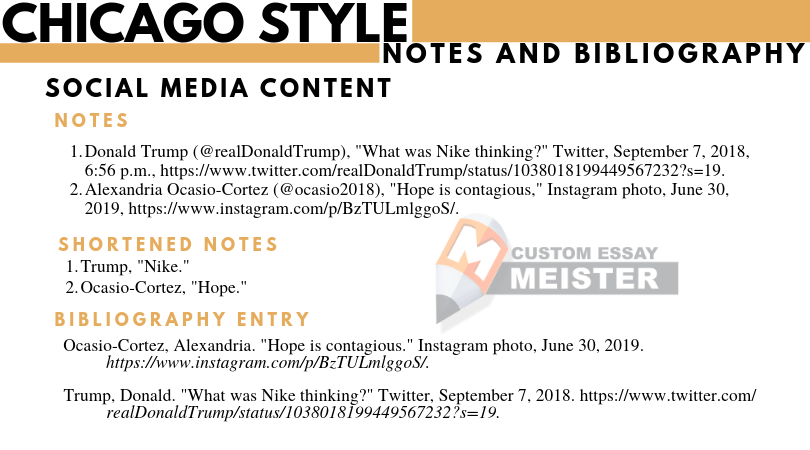
Personal communication
E-mails, texts, and direct messages sent through social media, which are all classified as personal communication are usually only cited in the note, but not in the bibliography.
Neil Gaiman, Twitter direct message to author, June 20, 2019.
Author-date System
Book
Edited book
Chapter or part of an edited book
Translated book
E-book
Journal article
Journal article with four or more authors
News or magazine article
Book review
Interview
Thesis or dissertation
Website content
Social media content
Personal communication
As in the Notes and Bibliography system, personal communication is only cited in the in-text citation. It does not need to have an entry in the Reference list.
(Neil Gaiman, Twitter direct message to author, June 20, 2019)
Need to write an essay in Chicago citation style?
Following the MLA and APA citation styles, the Chicago citation style is the third most common citation styles in the academe. Unlike the MLA format, which is more suitable for the humanities, and the APA, which is more suitable for the sciences, the Chicago citation style is more versatile. This system allows researchers to cite almost any kind of sources available. CustomEssayMeister has more tips on writing research papers in Chicago style.
